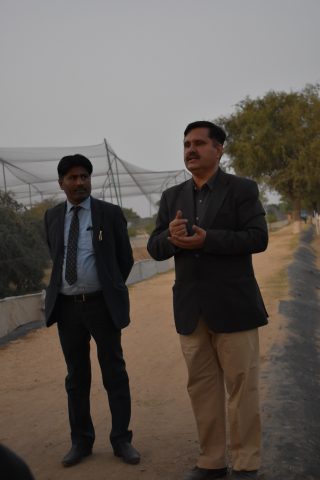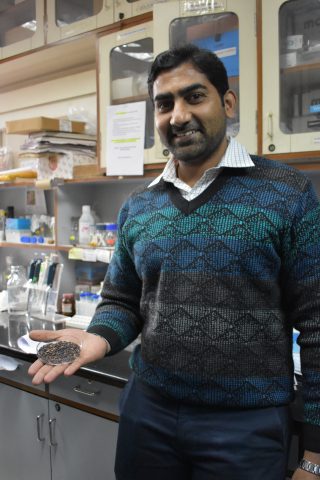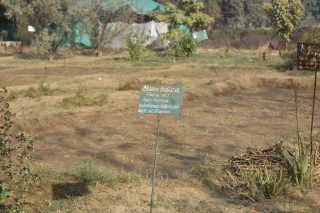As a pre-medical biochemistry major, I knew that I was taking a step outside of my comfort zone by joining an agricultural studies study abroad program. As a result, I spent the entirety of my time in India not only learning about a new culture, but also genuinely learning about unfamiliar topics like irrigation systems, vertical farming, and solar panels. However, I was surprised to discover that the topic of medicine kept reoccurring throughout the program. The UA Faculty Led Program for Experiential Learning in Indian Agriculture, therefore, was the perfect example of how students from diverse disciplines can find, learn, and make connections to aspects of their academic degree and their professional future.
Originally, I went to India expecting to make connections to medicine by observing how the different types of food and the farm-to-table process impact overall health of a population. However, I quickly realized that a traditional form of Indian medicine, Ayurveda, was a much more obvious and prevalent application with implications in both medicine and agriculture. Ayurveda is a traditional form of medicine with emphasis on mind-body wellness and balance, and it is based on multiple Sanskrit writings that are more than 2,000 years old. There are traditionally eight branches (including internal medicine, pediatrics, toxicology, etc.) and two categories (including curative and preventative), but the most widespread application during my program in India concerned preventative treatments.
Mostly these treatments involved common herbs and spices and some other common crops for a spectrum of different medicinal purposes. At the National Research Centre for Seed Spices, I received the most comprehensive overview of the different effects. For example, fenugreek is believed to help with joint pain, to limit the complications of type II diabetes, and to increase the blood oxygen levels, and as a result, it is evidently used by many climbers and travelers to prevent altitude sickness. Ajwain (or carom seeds) are believed to purify the blood and are used by countless new mothers immediately postpartum. Even here, there were about ten different spices mentioned, each with different effects.
One of the most fascinating aspects of the discovery of this marriage between medicine and agriculture in India was that almost every academic visit involved this aspect of Ayurveda. The spokespersons at each farming community, each greenhouse, and each garden mentioned the value of the medicinal benefits of whatever was grown there. At the student farms at Dayalbagh Educational Institute (DEI) in Agra, separate spices were denoted by signs displaying their names and their medical purpose – a feature that at the time seemed slightly misplaced in the middle of large fields purposed for agricultural learning. Furthermore, at the small garden in the center of the campus, a student gave us a tour, and while passing around different leaves to feel and smell, I found it interesting that he was sure to mention of the medicinal benefits of each plant.
I think the reason that I found the concept of Ayurveda so surprising and exciting was that I am from a country in which the general population is quite divided about alternative medicine. I asked one of our academic hosts whether most Indians subscribed to belief in Ayurveda, and she replied that most everyone she knew believed in some aspect of it, particularly in the dietary preventative treatments. Also, she mentioned how it was common to all Indians despite a large variation in socioeconomic status since most herbs and spices central to these treatments were very cheap. It was encouraging to see something as simple as preventative steps for general health fundamental to a culture
Much of traditional Ayurvedic medicine has been passed down by word of mouth, and as a result, each family may have their own variations on a treatment or remedy. However, because this form of medicine has its roots in tradition and is most prevalent in developing regions of the world, there are not many experimental studies to support all the claimed medicinal benefits. As alternative medicines are gaining popularity in Western culture, experimenters are performing more scientific studies, and it is going to be fascinating to see how many of these claims are proven or disproven.
Overall, this program perfectly demonstrates how a student from a non-related discipline can make connections to their major and draw applications for a future career. This agricultural studies program in India afforded me so much more than I expected toward my understanding of the connection between agriculture and medicine. As a future physician, I can only hope that my patients and my community begin to adopt the value that Indians placed on preventative medicine through Ayurveda.
https://drive.google.com/file/d/1YKZUMG6ogKTlcD3GaOomHwraqyETs1Gr/view?usp=sharing



